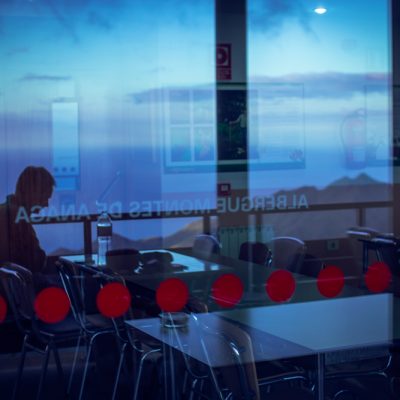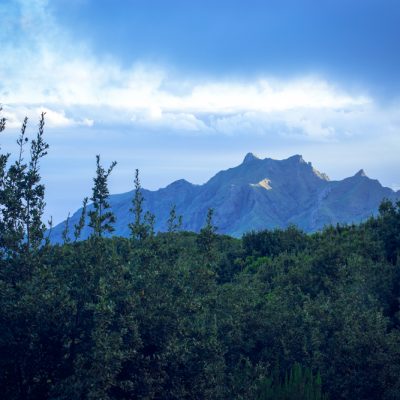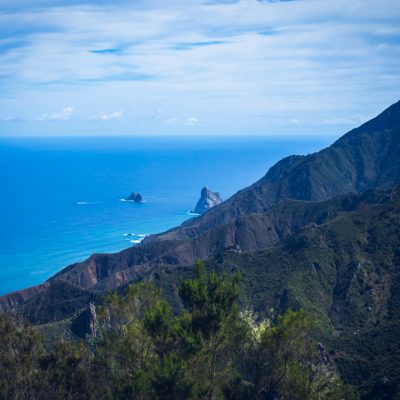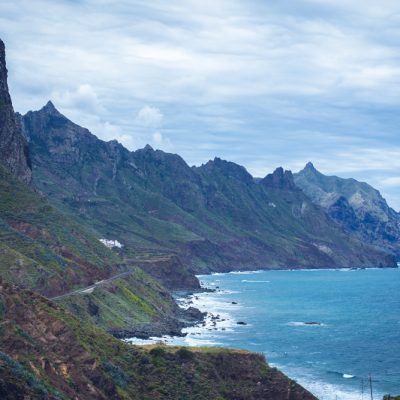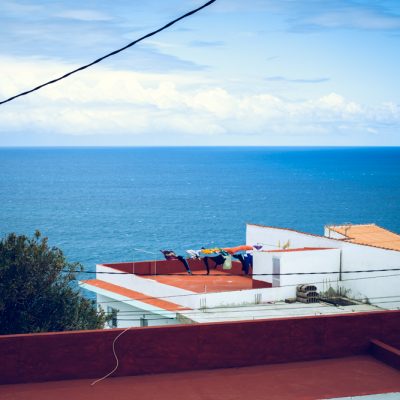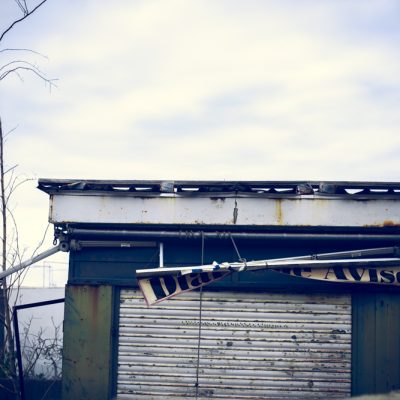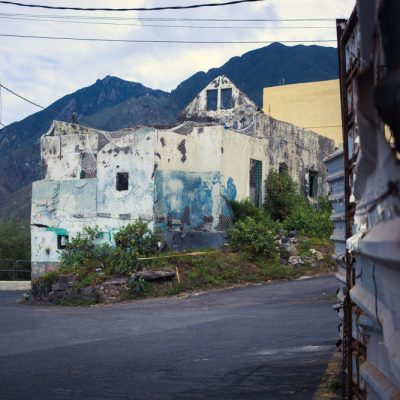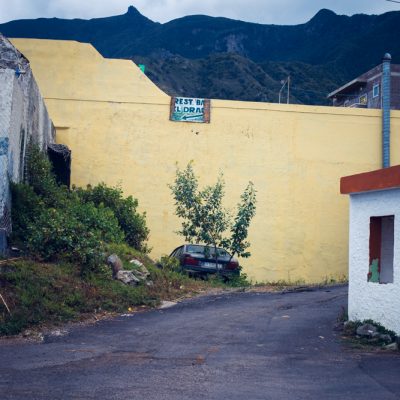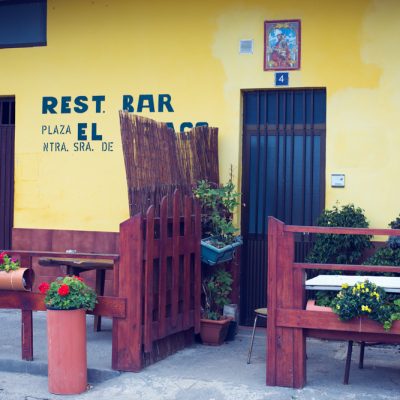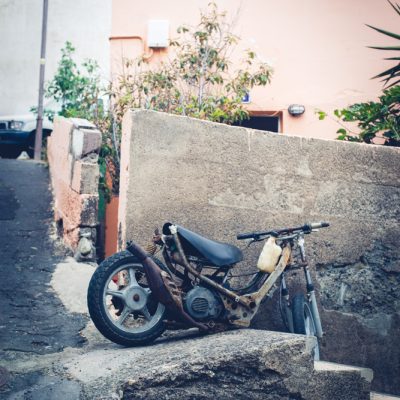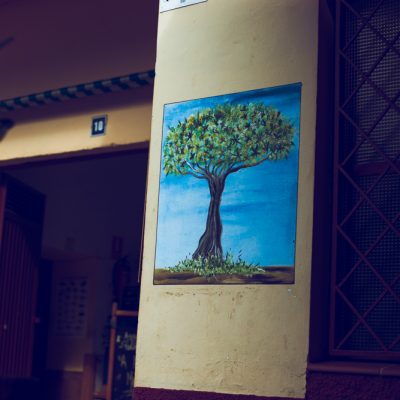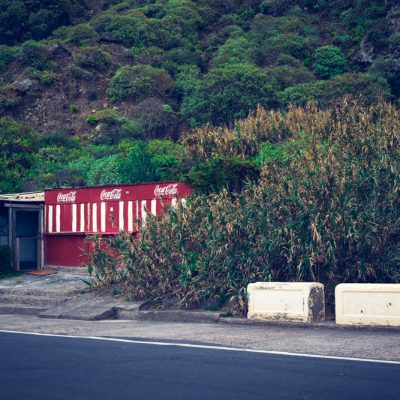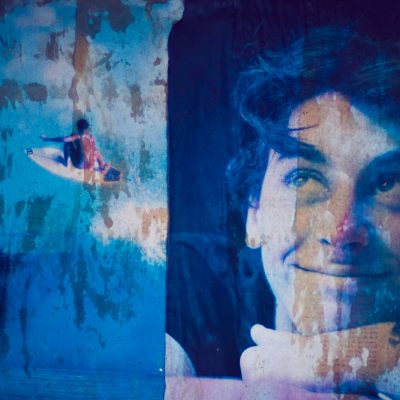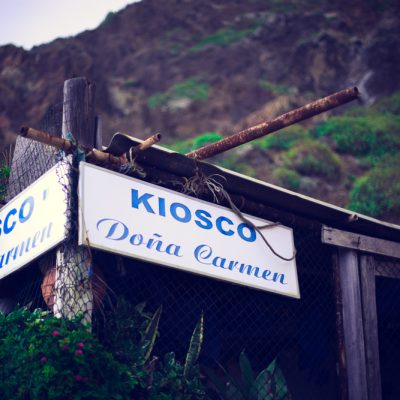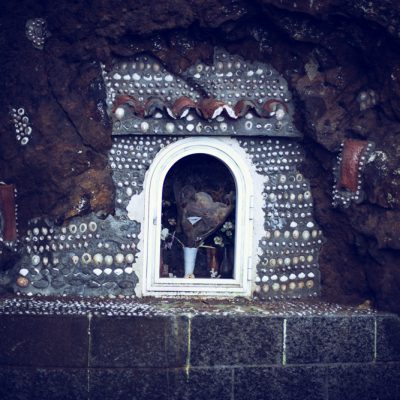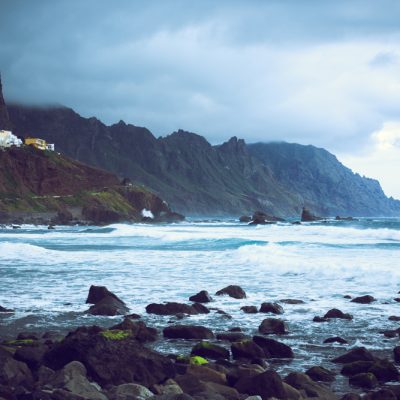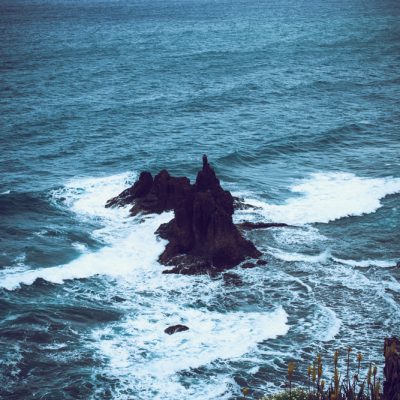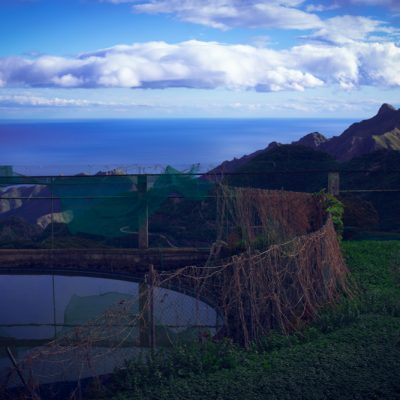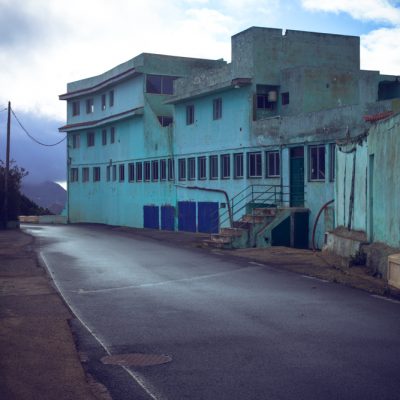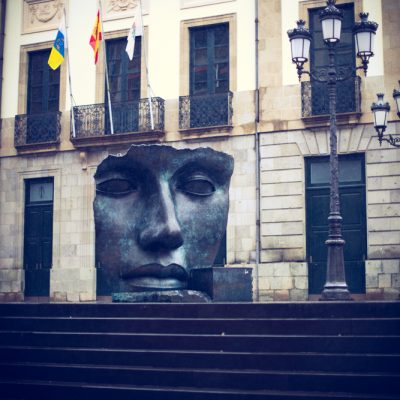After slowly leaving Garachico in the morning, we traveled less than two hours to the Anagas Mountains in the Northeast of the island. But before gaining altitude, we stopped at the Playa de las Teresitas. Very near to Santa Cruz de Tenerife, the capital city, this one kilometre-long man-made beach is apparently one of the best on the island. Reading on a sun bed there was pleasant enough, but we both preferred the black volcanic sand to the golden one imported from the Sahara.
A couple of hours later, we were en route to our Albergue, driving on an impressive, windy and narrow road around the mountains. We left the sun behind and discovered the Anagas, whose rocks disappear under laurel trees which thrive there despite the altitude of eight hundred meters. Our hostel, a modern looking building which could probably be used as a secret hideout in a James Bond movie, was perched at the top of the mountain, in the middle of nowhere. The wide balcony had a breathtaking view on the sea, a perfect place to write while drinking coffee (and beer!).
The next day, we went on a hike to explore this isolated area. We started going down the mountain, walking on a small path shaded by elegant laurel trees. Without a map, we got lost a few times, taking wrong turns which led us to “fincas” (private estates). It is on one of these that my Spanish capacities were tested to their maximum during our encounter with a friendly bare-chested old man who explained to us where to find the right trail with a very strong local accent. After some more uncertain steps through modest looking hamlets that didn’t seem to have electricity, we arrived in the village of Almaciga. We felt we were the only living souls in that ghost village, everywhere that could have been open – the restaurant, the news kiosk – was shut, more or less for ever depending on their state of deterioration. The only signs of life were the distant sound of a radio station and some colourful laundry waving in the wind. This atmosphere of silence was bizarre, especially as the village is very close to Playa de Benijo, which is apparently a “surfing hotspot”, although we didn’t see any of these creatures. Seated on the black sand, eating our perpetual bread, cheese and ham picnic, we did wonder if surfing in this rocky and wild ocean would be a good idea… After a beer in the village of Taganana, we took the bus back to El Bailadero, the nearest place to our hostel with a beautiful view on both sides of the island. There, we counted two abandoned looking buildings, one terrifying barking dog and one cloudy pool.
On the morning after, we woke up in fog. The sea view from the balcony had disappeared under heavy clouds, and we decided to escape the haze and visit Santa Cruz de Tenerife. The rain welcomed us down there so we went to visit the “African Market”, a covered market that is African only by its name. It appears that our ham had taken the taste of its neighbouring delicious Canarian bananas, so we bought a nice paella from the market instead. The meal was followed by a visit of the Museum of Nature and Man where we learnt about the history of the Guanches, the first inhabitants of the Canarian archipelago who are believed to be from Berbere origins. Our knowledge of these people became even more intimate by meeting their mummies, extremely well conserved in goat skin and who had kept some of their hair and skin! After a brief look at the contemporary architecture of the library and contemporary art museum of the city, we had some croquetas, aubergine with honey and the local delicatessen “carne fiesta” (the name is nice, the execution not so good) and headed back for our last night in the Albergue.
